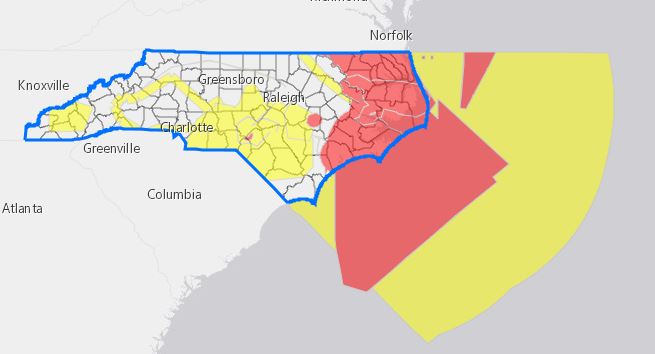
This story has been updated regarding references to the map’s creation.
RALEIGH – The state senator who authored the now-expired moratorium on wind energy development in North Carolina has offered a “compromise” bill he says will alleviate risks to military training. But the measure would put most eastern North Carolina counties off limits to wind power development.
Supporter Spotlight
Sen. Harry Brown, R-Onslow, on Wednesday introduced Senate Bill 377, the Military Base Protection Act, that he described as “a fair and reasonable middle ground” that would protect Defense Department operations, the second-largest sector of the state’s economy, while allowing responsible wind energy development.

Senate President Pro Tem Phil Berger’s office said the bill is based on a 2017 study of risks associated with wind farms in areas the military uses for training exercises. The study authored by engineering firm AECOM and the North Carolina General Assembly’s Legislative Services Office led to creation of a map identifying areas in which tall structures pose a “high risk (of) degrading safety and the military’s ability to perform aviation training.”
AECOM disputed the announcement, saying it did not create the map that Berger’s office had attributed to the “coordinated effort” between AECOM and what Berger’s office said was the North Carolina Commerce Department, rather than the Legislative Services Office. A link to the map identifying areas in which tall structures pose a “high risk [of] degrading safety and the military’s ability to perform aviation training” provided in the press release now points to a password-protected website.
According to the map, all coastal counties except Brunswick, New Hanover and a portion of Pender County would be included in the high-risk area.
Supporter Spotlight
In a joint statement, retired Maj. Gen.Robert Dickerson, former commanding general at Camp Lejeune, and retired Lt. Gen. Gary McKissock, former commanding general of Marine Corps Logistics Bases and former commanding general of Marine Corps Material Command said, “The comprehensive mapping effort, if used as a template, should provide the state compatible growth around military installations that doesn’t interfere with ranges and military installation missions. This proposal brings clarity to an issue that may possibly weigh against North Carolina’s military installations in future BRAC (Base Closure and Realignment) evaluations.”
The 18-month moratorium on wind energy enacted in 2017 expired at the end of 2018. Brown, the Senate majority leader, said the moratorium was needed to allow time to better understand the risks to military personnel and equipment during training exercises.
The study looked at data on military training routes and operations to identify zones of high risk, medium risk and low risk posed to military operations by tall structures. Brown’s bill would prohibit wind turbines in high-risk zones identified in the study.
“First of all, we shouldn’t take any action that jeopardizes the United States military’s ability to safely train the brave men and women who serve our country,” Brown said in a statement. “Beyond that, though, the military is the lifeblood of eastern North Carolina’s economy. It supports hundreds of thousands of jobs and billions of dollars in economic activity. Constructing obstacles that degrade the military’s ability to conduct training exercises puts our military bases at risk of closure during the next BRAC proceeding.”







